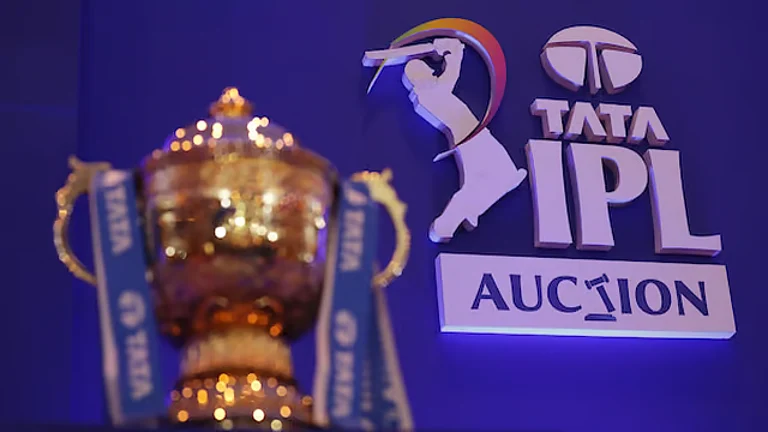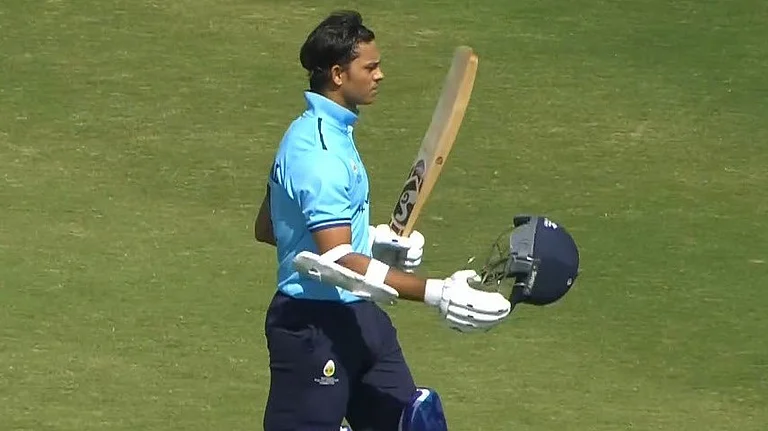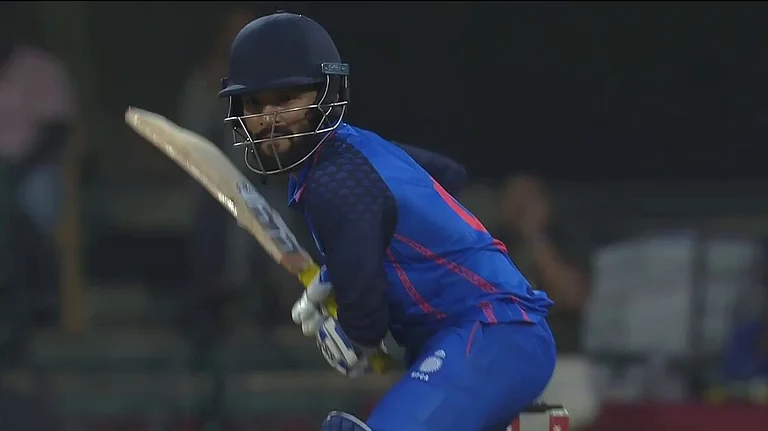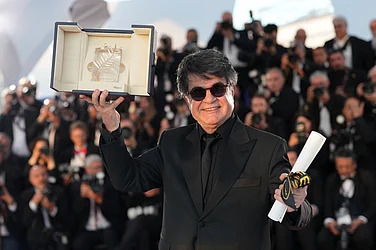Going by the number of releases starring female leads in the last few years, it could be said that Bollywood has had a certain burst of women-centric, ‘feminist’ films. Breaking away from the stereotypical portrayals of female characters in Hindi cinema, actresses from different generations–young and old alike—are outdoing each other not only in playing powerful, pivotal roles in these movies but also in carrying the projects entirely on their shoulders. In a brave, new-age showbiz, the beauties are no longer frail, and can very well hold on to the weight of box-office expectations with consummate ease—without the brawn of any saleable male star.
From battle-scarred veterans such as Sridevi and Raveena Tandon to new kids on the block like Shraddha Kapoor and Taapsee Pannu, every established actress in B-town appears to be raring to go for a women-centric movie or two to add heft to their curriculum vitae. Making the most of the unusual trend that has overtaken the male-dominated industry, some of them have even come out of semi-retirement and self-imposed exile to don the greasepaint and face the arc lights all over again.

Aparna Sen’s Sonata
In what could be hailed as the most discerning change in post-millennial Hindi cinema, female actors are getting their due like never before. But is it for real or just a passing fad? Is the audience really ready and mature enough to accept the glut of such movies yet? Well, going by the fate of many such films released this year, it appears that it will take more time before Bollywood comes of age with regard to its women leads. The macho, often middle-aged, superstars who have been churning out Rs 100-crore hits almost on demand with or without the merit of their films remain the monarchs of the film industry.
Last week, three movies featuring actresses from three diverse generations in central roles released on the same Friday, and sank without a trace, unable to ensure enough footfalls in the theatres despite creditable performances. The much-awaited Noor, which had Sonakshi Sinha playing the title role of a 28-year-old Mumbai-based television journalist weighed down by her inability to pursue people-centric stories for her channel, registered a paltry collection of Rs 5.52 crore in its first weekend, an amount collected by her previous release, Akira on its opening day itself. Based on the novel, Karachi, You Are Killing Me! by Pakistani writer Saba Imtiaz, the film saw Sonakshi in her career-best performance but it was not enough to set the cash-box jingling.
The fate of 42-year-old Raveena Tandon’s Maatr, which showcased a mother’s spirited fight to ensure justice for her gang-raped daughter, was no better, as it could only earn a measly Rs 1.68 crore in its opening weekend. Acclaimed film maker Aparna Sen’s English venture, Sonata, starring 66-year-old Shabana Azmi in the lead did not record decent collections either. Even though none of the big movies was released along with these films, they failed to lure the audiences.
It was not as though these movies—made on shoestring budgets, devoid of conventional heroes and released on a limited number of screens—were expected to turn into instant money-spinners. But then, their collective failure did come as a big let-down for the votaries of women’s cinema who had expected a great deal from them, given the emergence of a niche audience for such movies in the post-multiplex era.

Raveena Tondon starrer Maatr
In what is being touted as ‘the year of feminist movies’, Bollywood has already been jolted by bigger shocks prior to the failure of these movies. Earlier this month, Vidya Balan’s much-hyped Begum Jaan failed to live up to expectations, both from the commercial and critics’ points of view. Its collections were worse than those of her earlier flops like Hamari Adhuri Kahani and Shaadi Ke Side Effects. Many found the treatment of Srijit Mukherjee’s Begum Jaan, a tale of a group of prostitutes at the time of Partition, too contrived and regressive. Equally disastrous was the end-result of Kangana Ranaut’s Rangoon, an ambitious, big-budget film by the cerebral Vishal Bhardwaj. Even the presence of stars like Shahid Kapoor and Saif Ali Khan, apart from Kangana of course, could not save the film.
For the uninitiated, Kangana and Vidya have remained the quintessential flag-bearers of feminist movies for quite some time by consistently churning out commercial successes such as No One Killed Jessica, Queen, Tanu weds Manu and Kahaani. These movies seemed to debunk the long-standing myth in Bollywood that an omniscient male hero was the only sine qua non for a blockbuster. It was primarily the success of their movies that subsequently prompted mainstream actresses such as Deepika Padukone and Priyanka Chopra to accept movies like Piku, Jai Gangaajal and Mary Kom, which had strong female characters. Little wonder then, the failure of the movies of Kangana and Vidya left film pundits wondering whether the poster girls of women’s cinema had lost their Midas touch at the turnstiles.
There are, however, other reasons, poor content being a major one, for the failure of these films. Some believe that a surfeit of backward-looking movies is being made these days in the name of women empowerment films. Ashwini Iyer-Tiwari, who made the widely-acclaimed Nil Battey Sannata last year, thinks too many women-centric movies are being made now ‘in an aggressive manner’. “I think it is becoming too much in terms of what we are seeing now. The way we are telling the stories is becoming regressive for the audience,” she tells Outlook.
Iyer-Tiwari, who is now making a rom-com, Bareilly ki Barfi with Kriti Sanon, Rajkummar Rao and Aysuhmann Khurrana, says that the emphasis on woman empowerment is too high. “No One Killed Jessica came at the right time and raised an issue which is still important but now the way we are telling stories is becoming regressive.”
“Cinema is a medium which can make the audience laugh, cry or take back some social message, but at the moment I feel there is too much display of regressive emotions,” she says.
However, a section of film makers insist that content is not the only reason for the flopping of such movies. They rue the fact that such films do not even get enough number of screens at the multiplexes at the time of their release. Director Shefali Bhushan says her maiden film Jugni’s music received rave reviews but it was not promoted properly because the film did not have ‘star faces’. “Studios pump in big money behind the films they produce while the smaller films just don’t reach the audience’s mind-space,” she says.
Bhushan says that in an era of big-budget movies produced by big studios, is it very difficult for small films to survive. “Multiplex owners are concerned only about the revenues and since smaller films with smaller publicity spends cannot compete with the bigger releases, they don’t give them good show timings or enough screens,” she says.
Iyer-Tiwari agrees that small, heroine-oriented movies are released on a small scale but underlines the fact that word-of-mouth certainly helps if they are really good ones. “Nil Battey Sannata was released on a small scale but it went on to run for ten weeks,” she points out.

A still from Sonakshi Sinha’s Noor
Positive feedback from the audience, howsoever small, certainly helps. Avinash Das’s Anaarkali of Aarah starring Swara Bhaskar in title role of a raunchy dancer from Bihar received overwhelmingly good reviews but that did not convert into good business in its first week. Jitendranath Jeetu, the film’s casting director, says that it was yanked off from theatres in Mumbai after the first week. “But it has now returned to the theatres in Mumbai, Delhi and elsewhere due to world-of-mouth publicity,” he says.
Still, trade experts believe that Anaarkali got the screens once again because all the new releases like Noor were not doing good business. Of course, it does not happen in case of every small, women-centric film. Bhushan says: “Even if the word-of-mouth publicity is positive, it takes time to spread and by the time that begins to happen, the theatres push the smaller films out.”
The commercial failure of these films has once again reinforced the belief that the audiences at large prefer a male-dominated movie. Except for a rare blockbuster like Tanu Weds Manu, which stormed into the Rs 100-crore club, otherwise dominated by the Shahrukh-Salman-Aamir Khan triumvirate and Akshay Kumar, there have been only a few women-centric movies like Dirty Picture and Neerja, which have so far managed to cross the Rs 50-crore business mark. This year too, Taapsi Pannu’s Naam Shabana earned around Rs 40 crore in the domestic circuit despite an extended cameo by superstar Akshay Kumar. Anushka Sharma’s home production, Phillauri also failed to make it big. Film writer R. Mohan says many bad movies of big male stars have done phenomenal business over the years while several good movies of several actresses have flopped miserably.
Still, the damp squibs have not yet deterred film makers and actresses from investing in such projects. While the comeback film of Raveena has already come and gone, some of her contemporaries are also set to return this year. Leading the pack is Sridevi, who had made a successful comeback with Gauri Shinde’s English Vinglish (2012). At 54 now, she is returning with Mom, a tale of a career woman and her equation with her stepdaughter.
Kajol, the 42-year-old contemporary of Raveena’s, is also going great guns not only in Hindi cinema but also in the South. She is at present waiting for the release of her Tamil movie, Velaiilla Pattadhari 2 (VIP 2), co-starring Dhanush and Amala Paul, in which she has a grey character. Her movie, incidentally, will clash with Sridevi’s Mom and Shraddha Kapoor’s biopic of absconding don Dawood Ibrahim’s sister Haseena Parkar at the box office on July 14.
Also doing the pivotal roles, post-marriage and motherhood, is Aishwarya Rai, who is set to work in Mani Ratnam’s next after delivering Jazbaa, Sarbjit and Ae Dil Hai Mushkil in quick succession in the past couple of years.
But the moot point remains: will the new wave of women’s cinema last long in the face of recurring commercial failures? As of now, the gritty ladies on the screen may well have to pull off blockbusters again to prove that their box-office pull was not a mere flash in the pan.


























